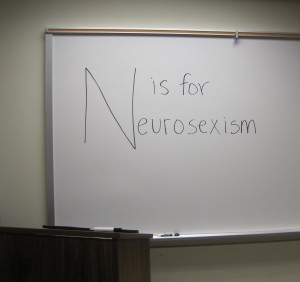Cross-posted from The Neuroethics Blog (Emory Center for Ethics)
Twenty or thirty years ago, single-sex education for girls was a feminist clause célèbre. However, beginning in the late 1990s and early 2000s, people began to worry that boys were “underperforming” in school and in life (an idea nicknamed “the boys’ crisis” by the popular press). The media framing of the boys’ crisis has been critiqued on a number of fronts – specifically, critics have pointed out that both girls and boys are performing better in school than in the past and that the difference in educational achievement between white and middle-class students and low-income and minority students is far more pronounced than the difference between female and male students (see a 2008 report from the American Association of University Women).
However, despite these critiques, cultural commentators began to advocate for single-sex education in public schools as a solution to the boys’ crisis. Commentators like Michael Gurian (author of Boys and Girls Learn Differently!) and Leonard Sax (founder of the National Association for Single Sex Public Education and author of Why Gender Matters) argued that boys’ and girls’ brains develop differently, so boys and girls should be separated in school and should receive education targeted to their specific neuro-developmental patterns and mental strengths.
